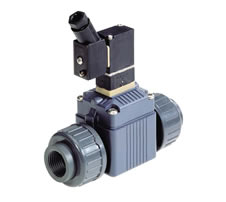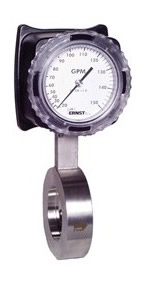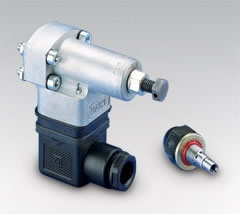Vacuum pumps play a versatile and significant role in many industrial and manufacturing processes today. Its versatility spans industries such as aerospace, the military, electricity, medical, chemical, pharmaceutical, petrochemical, coating, dental, waste water treatment among many others.
Vacuum pumps remove atmosphere from a sealed container. The atmosphere could be oxygen or any other gaseous molecules. A partial vacuum is left in the container. Positive displacement, momentum transfer and entrapment are the three types of pumping techniques that can be most broadly categorized within the use of vacuums. Positive displacement uses a mechanism to repeatedly expand a cavity that allows gases to flow in from the chamber and seal off the cavity and then exhaust it to the atmosphere. Positive displacement pumps are best used for low vacuums. Momentum transfer pumps remove gas molecules from the chamber using high speed jets of dense fluid. These pumps create the most common combination for high vacuums when used in cooperation with one or two positive displacement pumps. Entrapment pumps trap gases in either an absorbed or solid state. They are an ideal addition to receive ultrahigh vacuum suction. Unfortunately, entrapment pumps require more maintenance because the surfaces that captures molecules and ions and need to be regenerated regularly. This causes very short operational time in low and high vacuums.
Vacuum pumps come in many different shapes, sizes and specifications depending on its application use and cost. Some differences include: manufacturing tolerances, sealing material, flow, service intervals, reliability, pressure, admission or no admission of oil vapor and tolerance to dust, chemicals, liquids and vibration. Some vacuum pumps are dry (oil less) or require a rotary vane pump to function. Some are specially made for use in a laboratory or medical or dental setting while other have heavy duty industrial uses. Vacuums can be seen in nearly every aspect of industry.
 Ball Valves
Ball Valves Butterfly Valves
Butterfly Valves Centrifugal Pumps
Centrifugal Pumps Check Valves
Check Valves Diaphragm Valves
Diaphragm Valves Flow Meters
Flow Meters Hydraulic Pumps
Hydraulic Pumps Hydraulic Valves
Hydraulic Valves Metering Pumps
Metering Pumps Solenoid Valves
Solenoid Valves Vacuum Pumps
Vacuum Pumps Castings & Forgings
Castings & Forgings Bulk Material Handling
Bulk Material Handling Electrical & Electronic Components
Electrical & Electronic Components Flow Instrumentation
Flow Instrumentation Hardware
Hardware Material Handling Equipment
Material Handling Equipment Metal Cutting Services
Metal Cutting Services Metal Forming Services
Metal Forming Services Metal Suppliers
Metal Suppliers Motion Control Products
Motion Control Products Plant & Facility Equipment
Plant & Facility Equipment Plant & Facility Supplies
Plant & Facility Supplies Plastic Molding Processes
Plastic Molding Processes Pumps & Valves
Pumps & Valves Recycling Equipment
Recycling Equipment Rubber Products & Services
Rubber Products & Services